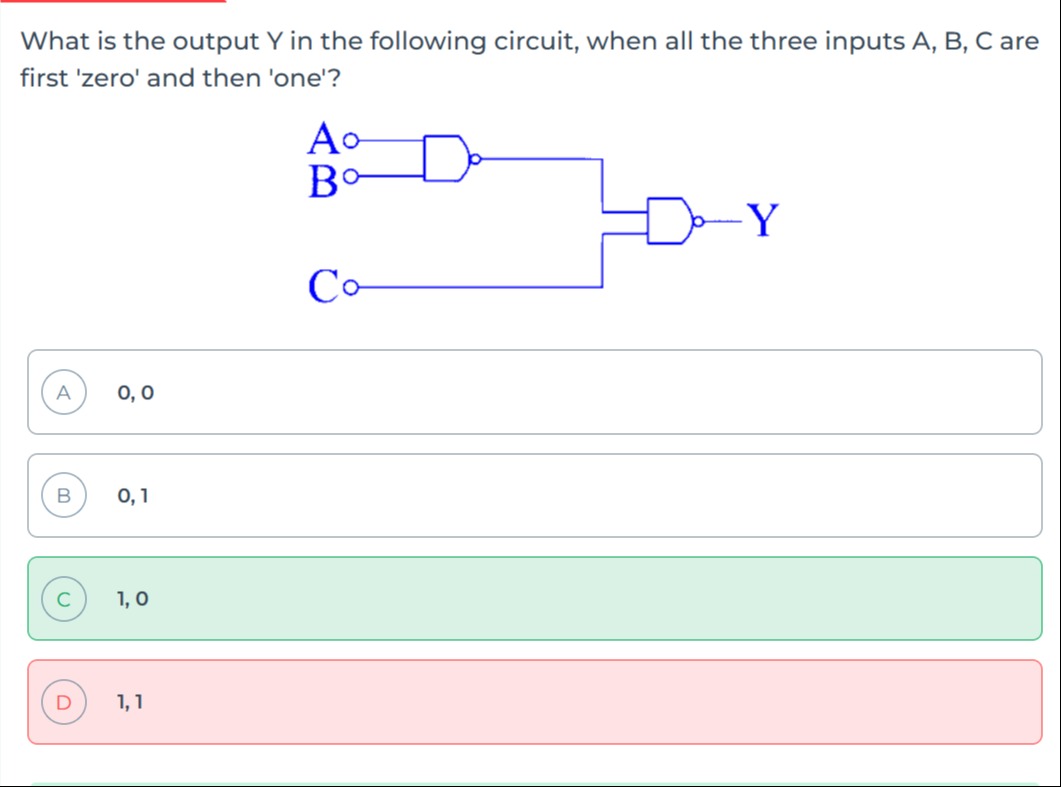Question
Question: What is the output Y in the following circuit, when all the three inputs A, B, C are first 'zero' an...
What is the output Y in the following circuit, when all the three inputs A, B, C are first 'zero' and then 'one'?

A
0,0
B
0,1
C
1,0
D
1,1
Answer
1,1
Explanation
Solution
The circuit consists of two NAND gates connected in series.
-
First NAND Gate:
Y1=NAND(A,B)=A⋅B- For A=0,B=0:
Y1=0⋅0=0=1 - For A=1,B=1:
Y1=1⋅1=1=0
- For A=0,B=0:
-
Second NAND Gate:
Y=NAND(Y1,C)=Y1⋅C- When all inputs are 0: C=0 and Y1=1, so
Y=1⋅0=0=1 - When all inputs are 1: C=1 and Y1=0, so
Y=0⋅1=0=1
- When all inputs are 0: C=0 and Y1=1, so
Thus, for both cases, the output Y is 1.
